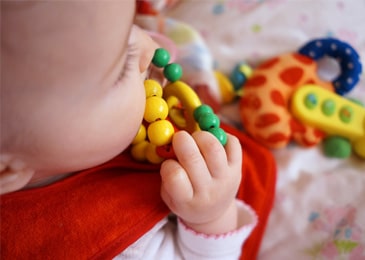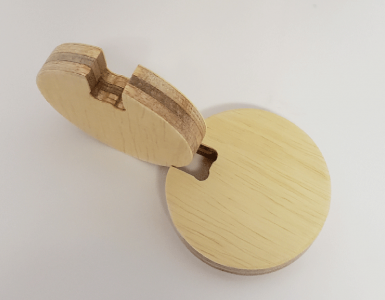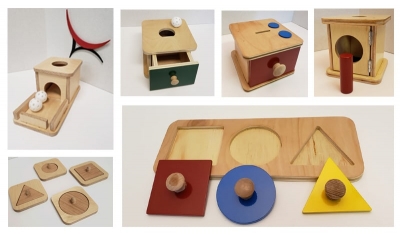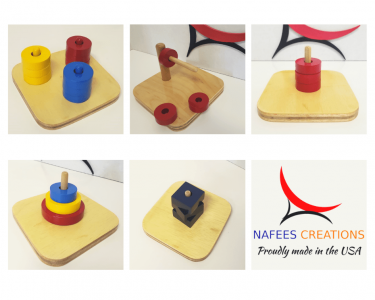
[av_one_full first min_height=” vertical_alignment=” space=” custom_margin=” margin=’0px’ padding=’0px’ border=” border_color=” radius=’0px’ background_color=” src=” background_position=’top left’ background_repeat=’no-repeat’ av_uid=’av-6vgui’]
[av_textblock size=” font_color=” color=” av-medium-font-size=” av-small-font-size=” av-mini-font-size=” av_uid=’av-1vynra’ custom_class=” admin_preview_bg=”]
Montessori Infants Activity Materials
This article is written to introduce and helping Montessori parents for Montessori based homeschooling. Although there is a lot of information on the internet and books about how to implement Montessori at home for babies and toddlers, it rarely introduces the step by step Homeschooling.
This article shows the physical development, Montessori aligned materials and activities to support your baby from birth to 18 months.
This is the perfect article for new parents hoping to do Montessori at home with babies but need help knowing where to start, what materials to introduce, and when to introduce them. It also offers tips on what Montessori materials you can offer the child to support development by age and stage.
The content presented here is based on information from the Montessori Foundation Scope and Sequence from infant-3 and the book Montessori from the Start.
[/av_textblock]
[/av_one_full]
[av_hr class=’custom’ height=’50’ shadow=’no-shadow’ position=’center’ custom_border=’av-border-none’ custom_width=’0′ custom_border_color=” custom_margin_top=’10px’ custom_margin_bottom=’10px’ icon_select=’no’ custom_icon_color=” icon=’ue808′ font=’entypo-fontello’ av_uid=’av-k1i862gm’ custom_class=” admin_preview_bg=”]
[av_image src=’https://www.nafeescreations.com/wp-content/uploads/2019/10/introduce-montessori-materials.jpg’ attachment=’4389′ attachment_size=’full’ align=’center’ styling=” hover=” link=” target=” caption=” font_size=” appearance=” overlay_opacity=’0.4′ overlay_color=’#000000′ overlay_text_color=’#ffffff’ copyright=” animation=’no-animation’ av_uid=’av-k1i7y9vc’ custom_class=” admin_preview_bg=”][/av_image]
[av_hr class=’custom’ height=’50’ shadow=’no-shadow’ position=’center’ custom_border=’av-border-none’ custom_width=’0′ custom_border_color=” custom_margin_top=’10px’ custom_margin_bottom=’10px’ icon_select=’no’ custom_icon_color=” icon=’ue808′ font=’entypo-fontello’ av_uid=’av-k1i862gm’ custom_class=” admin_preview_bg=”]
[av_one_full first min_height=” vertical_alignment=” space=” custom_margin=” margin=’0px’ padding=’0px’ border=” border_color=” radius=’0px’ background_color=” src=” background_position=’top left’ background_repeat=’no-repeat’ av_uid=’av-1mgbga’]
[av_textblock size=’16’ font_color=” color=” av-medium-font-size=” av-small-font-size=” av-mini-font-size=” av_uid=’av-1ma7ry’ custom_class=” admin_preview_bg=”]
Following are the stages and respective Montessori materials:
3 to 6 Months:
3-6 months is the time when you can expect the baby to begins attempting flipping over. Begin to roll both ways, push up on extended arms. Scoots along the floor using arms & legs to propel forward. He/she also uses his/her whole hand in a raking grasp and purposely manipulates objects.
Support this age and stage with a movement mat or quilt on the ground, grasping rattles and objects for manipulating, Gobbi mobile, beautiful Dancer mobile for color discrimination and visual tracking, Bell / Ring on a Ribbon for grasping. You can also introduce a treasure basket at this age. Display items on a low shelf. Many people also include a full-length mirror in the movement area.
[/av_textblock]
[/av_one_full]
[av_one_full first min_height=” vertical_alignment=” space=” custom_margin=” margin=’0px’ padding=’0px’ border=” border_color=” radius=’0px’ background_color=” src=” background_position=’top left’ background_repeat=’no-repeat’ av_uid=’av-1mgbga’]
[av_textblock size=’16’ font_color=” color=” av-medium-font-size=” av-small-font-size=” av-mini-font-size=” av_uid=’av-1ma7ry’ custom_class=” admin_preview_bg=”]
6 to 9 Months:

6 to 9 months is when most babies can roll from back to front and front to back, Sits supported and unsupported. Gets from sitting to crawling without assistance and crawling to sitting, crawl forward on the belly and then on hands and knees stand with support and support whole weight on legs. This is also when they start to reach with one hand to grasp, transfer objects from hand to hand, grasp and release objects, and clap.
Support their independence with the floor mat and movement area. Pull up bar or ottoman and pillow for supported sitting. Babies at this age tend to enjoy putting objects in containers and removing them.
Introduce as Montessori infants activity materials, a ball and cup game called palmar grasping block, rolling ball cylinder, interlocking discs, and a rolling drum. Also, Introduce the weaning table and chair, and a small reading set including a spoon, bowl, and cup. You can also use a folding floor tray instead of a chair and a table.
[/av_textblock]
[/av_one_full][av_one_full first min_height=” vertical_alignment=” space=” custom_margin=” margin=’0px’ padding=’0px’ border=” border_color=” radius=’0px’ background_color=” src=” background_position=’top left’ background_repeat=’no-repeat’ av_uid=’av-1mgbga’]
[av_textblock size=’16’ font_color=” color=” av-medium-font-size=” av-small-font-size=” av-mini-font-size=” av_uid=’av-1ma7ry’ custom_class=” admin_preview_bg=”]

9 to 12 Months:
9 to 12 months is when you expect a baby to walk with assistance. Pull himself up to a kneeling position then a standing one walk along furniture or pull-up bar, stand upright without support, and roll a ball to someone else. This is when he/she also practices the pincer grip, pokes, and points with the index finger, and holds large objects with both arms.
Support this age and stage with an Object Permanence Box with tray, then with object permanence box with drawer, Imbucare boxes with different shapes and prisms, Imbucare boxes with flip lids, Imbucare board with balls. Colored peg Imbucare board, single shapes puzzles, multi-shapes and size puzzles, Ball ramps, wide ring stacker, push balls, Materials for practicing pincer grip (Knobbed cylinder, fruit pieces, rice puffs, etc.). This is also when you can consider offering materials for self-care like a toothbrush, comb, shoes, and slippers. You can begin involving a child in practical life activities around the home.
[/av_textblock]
[/av_one_full]
[av_one_full first min_height=” vertical_alignment=” space=” custom_margin=” margin=’0px’ padding=’0px’ border=” border_color=” radius=’0px’ background_color=” src=” background_position=’top left’ background_repeat=’no-repeat’ av_uid=’av-1mgbga’]
[av_textblock size=’16’ font_color=” color=” av-medium-font-size=” av-small-font-size=” av-mini-font-size=” av_uid=’av-1ma7ry’ custom_class=” admin_preview_bg=”]

12 to 18 Months:
12 to 18 months is when most children begin to walk independently, walk carrying large objects, exert maximum efforts while carrying a large object, run stiffly, and attempts to kick a ball.
This is when they work with hands, become more refined, they use both hands to work together, often for purposeful work. Many children at this age like to dump, pour, and transfer. Many children begin to imitate scribbling support their gross motor development with large objects to carry or kick. This is also a good time to introduce the Pikler Climbing Triangle, introduce the various discs on dowels like rings on a vertical dowel, cubes on a vertical dowel, colored discs on a colored dowel, discs on a horizontal dowel, introduce different shapes on pegs, colored drawer box, etc.
[/av_textblock]
[/av_one_full]
[av_one_full first min_height=” vertical_alignment=” space=” custom_margin=” margin=’0px’ padding=’0px’ border=” border_color=” radius=’0px’ background_color=” src=” background_position=’top left’ background_repeat=’no-repeat’ av_uid=’av-1mgbga’]
[av_textblock size=’16’ font_color=” color=” av-medium-font-size=” av-small-font-size=” av-mini-font-size=” av_uid=’av-1ma7ry’ custom_class=” admin_preview_bg=”]
Many Montessori materials have multiple objectives that overlap across and integrate several categories which make it hard to into a chart.
The scope and sequence presented in this article is only an unofficial guide for parents to use at home. Modify your approach as needed.
[/av_textblock]
[/av_one_full]

